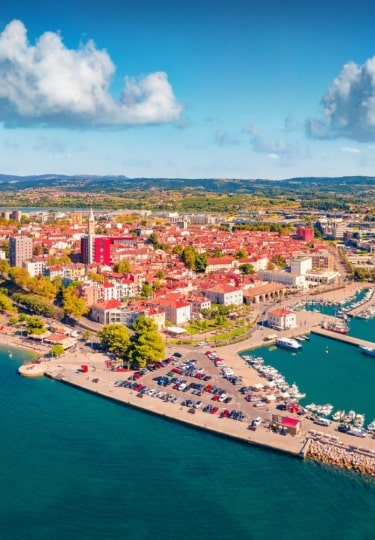Koper, Slovenia, is the largest city along the diminutive Slovene Riviera, or Slovenska obala, a sunny coastline packed with Adriatic allure.
As soon as you stroll through Koper’s Muda Gate (a former town entrance), you’ll be treated to an explosion of Slovene architecture, art, zesty culinary staples, and vibrant neighborhoods humming with life.
Slovenia’s picturesque seaboard clocks in at around 30 miles in length. The port city of Koper, situated along the northern reaches of Slovenia’s shores, is near the Italian border, and the Italian city of Trieste.
Koper is a showcase of Venetian architecture, historic buildings, just-off-the-boat seafood, the mesmerizing Praetorian Palace and more, all waiting for you to discover during your visit to this delightful seaside destination.
Why Visit Koper
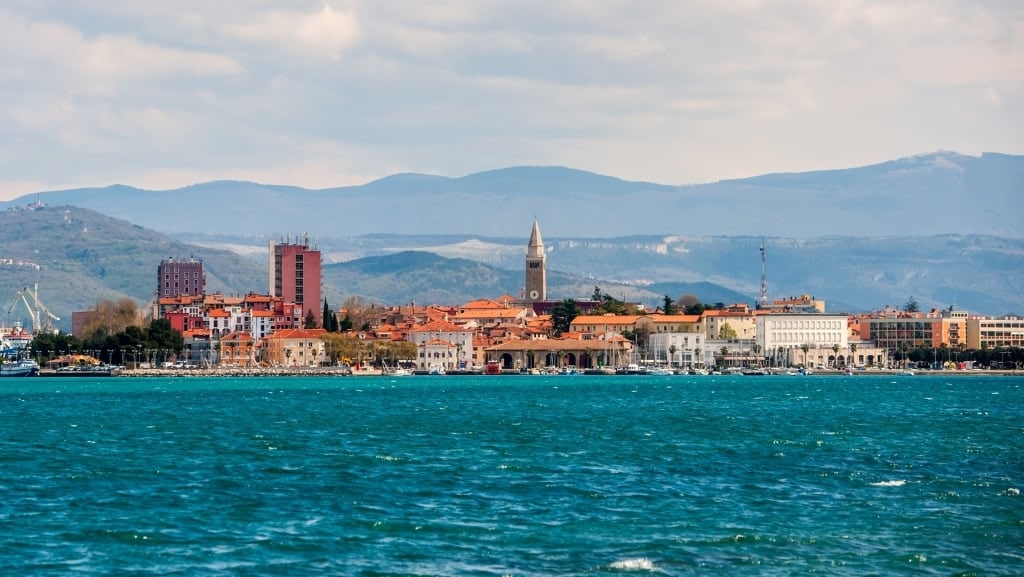
Koper
In addition to Koper’s attractive cobblestone streets, squares, cozy cafés, restaurants and grilled seafood, an abundance of different architectural styles is on display here, including Baroque, Gothic, Renaissance and Venetian.
Koper is also the perfect jumping-off point to explore nearby towns and scenic settings, like Piran, the capital, Ljubljana, or Lake Bled, all less than a two-hour drive from the port city. You’ll have more to do than you could possibly imagine during your stay, given Slovenia’s small geographical size.

Soča River
Koper will also afford you quick access to Slovenian’s many natural marvels, including white water rafting on the jade-green Soča River, hiking through the Julian Alps, and exploring miles of underground terrain inside the Postojna Caves.
Koper’s History & Culture
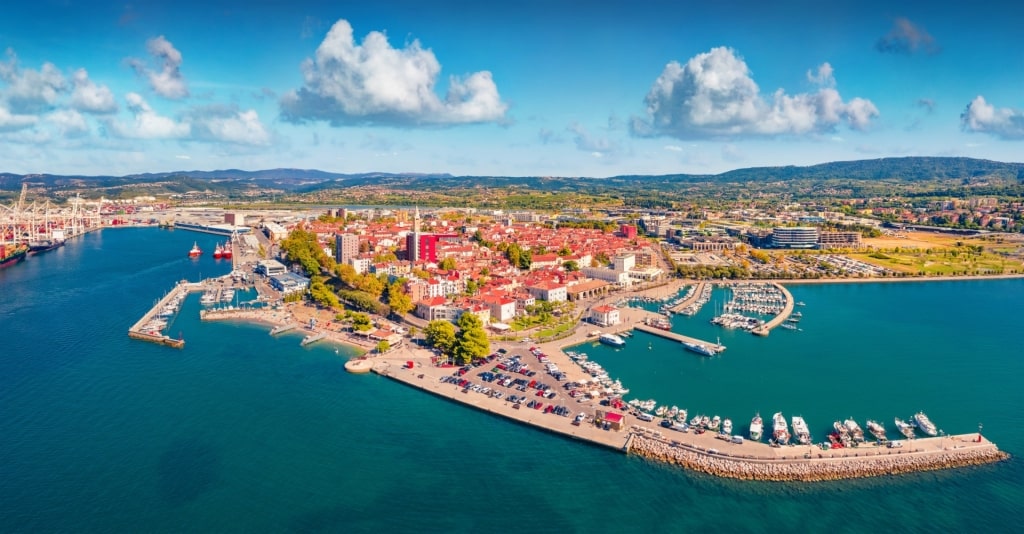
Koper
Koper, Slovenia, once upon a time, was a vital center for the Republic of Venice’s maritime empire. Before, and after that period, Koper served as a strategic location for a variety of different rulers.
Originally built on an island, Koper was a Greek holding called Aegida. Under Roman rule, the port was known as Capris, then referred to as Iustinopolis when the Byzantine Empire controlled the area during the sixth, seventh and eighth centuries—which is a period that coincides, more or less, with the arrival of the Slavs.
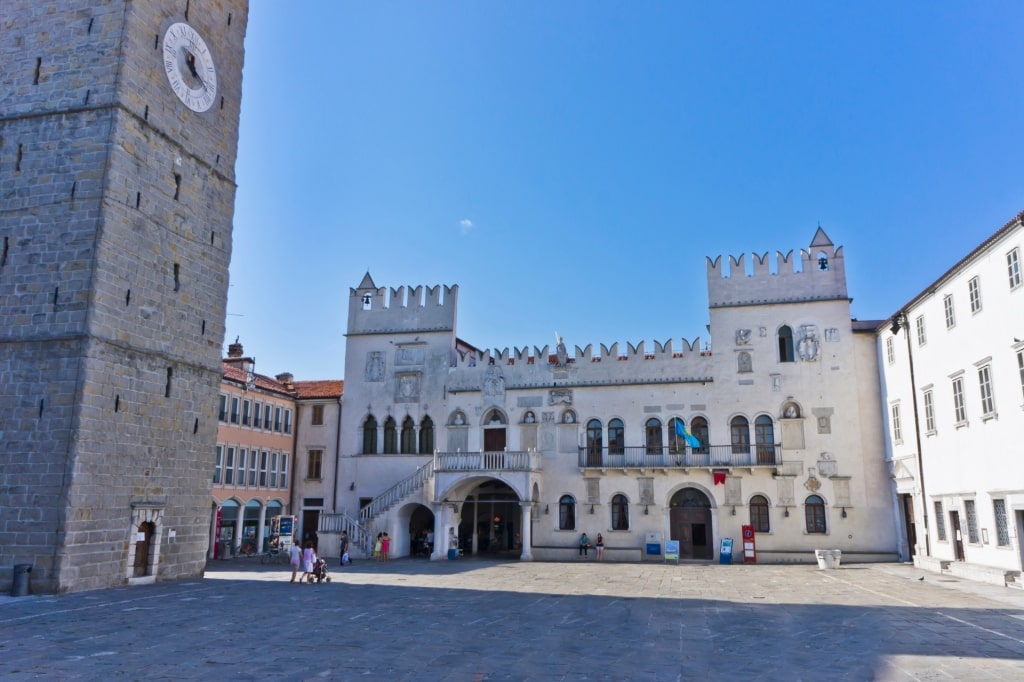
Koper
During the 12th century, the Istrian peninsula, on which Koper is located, was nominally under the rule of the Aquileian Patriarch, an ecclesiastical district or “see” based out of the Roman city of Aquileia.
The Venetian Republic took control of Koper, which they called Istria, and made it their regional capital from the late 13th century until the late 18th century. Venetian-style architecture is still clearly evident in the city’s many historical buildings.
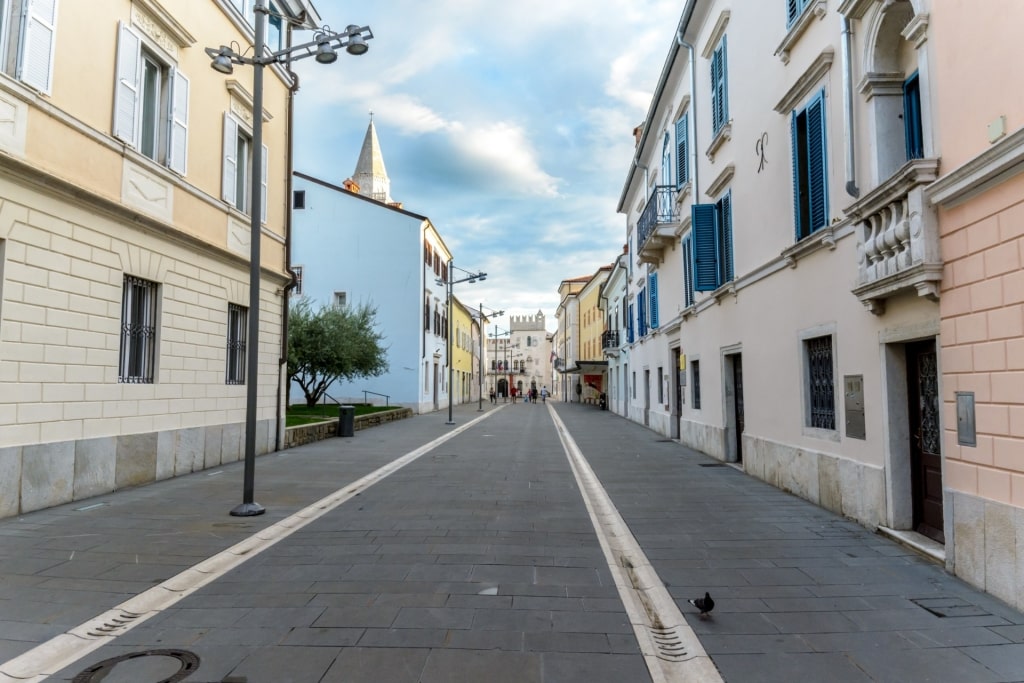
Koper
The late 15th and early 16th centuries saw numerous Turkish invasions into Istria, wreaking havoc on the economy and the local population. In the late 1700s, Napoleon occupied Istria for a time, and in the early 1800s, Austria ruled over Istria. Italy gained control over the area after the end of the First World War.
After the Second World War, Italy’s influence in the region waned. The Istrian peninsula, and Koper, eventually became part of Yugoslavia. After Yugoslavia dissolved, Koper became the main port of the Republic of Slovenia, established in the early 1990s.
Tips for Visiting Koper
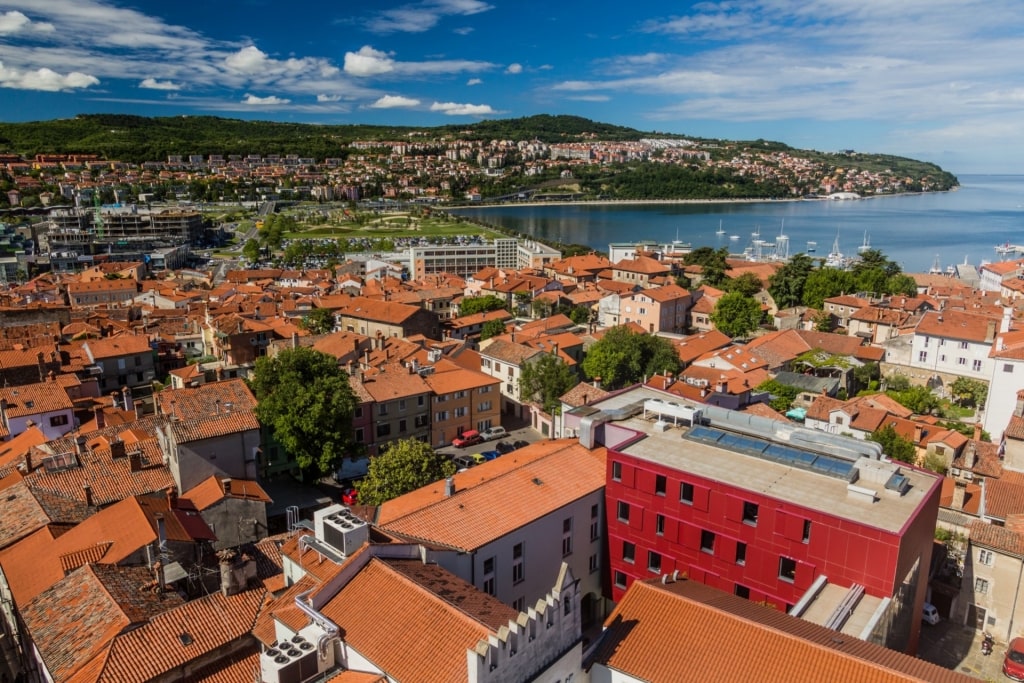
Koper
Slovenia is a small, compact nation on the Adriatic Sea, with varied terrain, from beaches and river valleys to verdant forests and mountains.
“Nearby” in Slovenia can often mean less than two hours away by car or transport, which you should take into account, as there’s a lot for you to see if you’re based out of Koper.
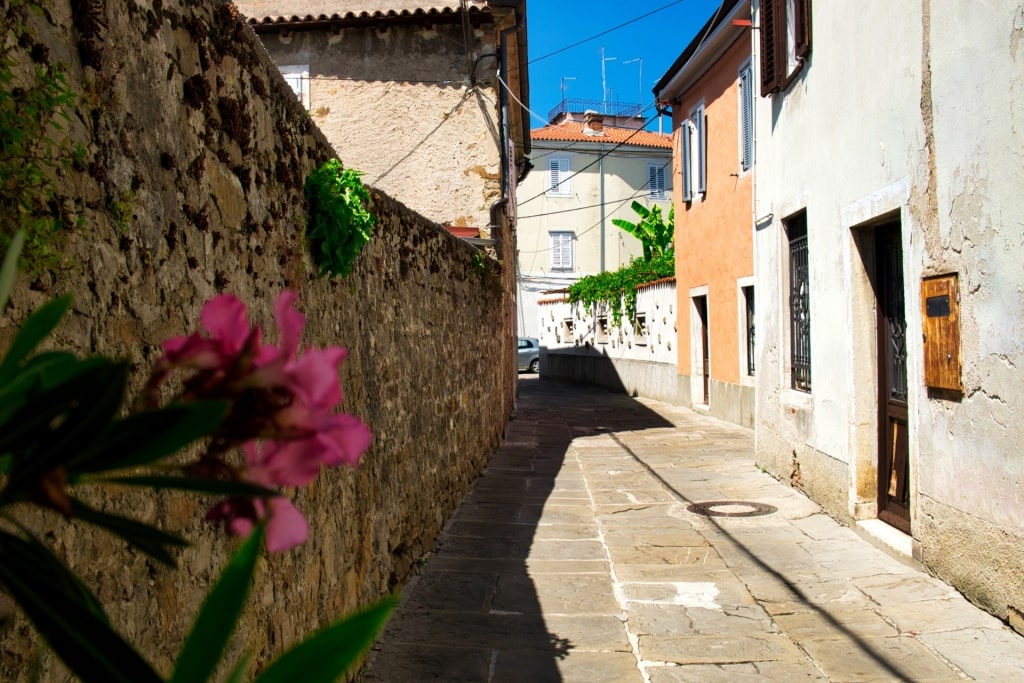
Koper
Slovenian is a European Union country. The Euro is accepted here. The locals are pretty good at English, so communication shouldn’t be too tough, but learning a few words of Slovene is always appreciated. Hvala vam is the polite way to say “thank you”.
Also, pack for beach weather and swimming if you’re arriving in the summer. Add a pair of good hiking boots and UV sunglasses into your luggage as well, because, in addition to wandering the stone streets of Koper or Piran, Slovenia will offer you more than 6,000 miles of well-defined mountain walking trails.
Read: 10 Best Hikes in Europe
Wildlife & Nature
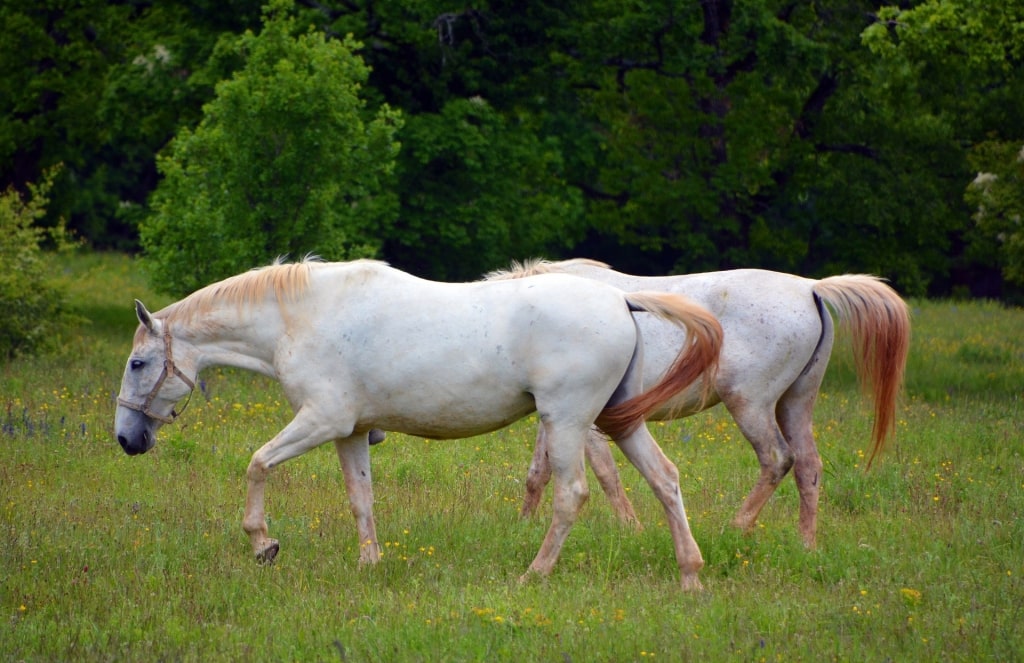
Lipizzaner horses
Koper and much of Slovenia’s Istria peninsula host plenty of land for wineries, olive groves and the semi-saline wetland Škocjanski zatok nature reserve, where you could spot a variety of bird species.
Slovenia is also where the famous white Lipizzaner horses, which perform at Vienna’s Spanish Riding School, are bred at Lipica, some 30 minutes’ drive from Koper.
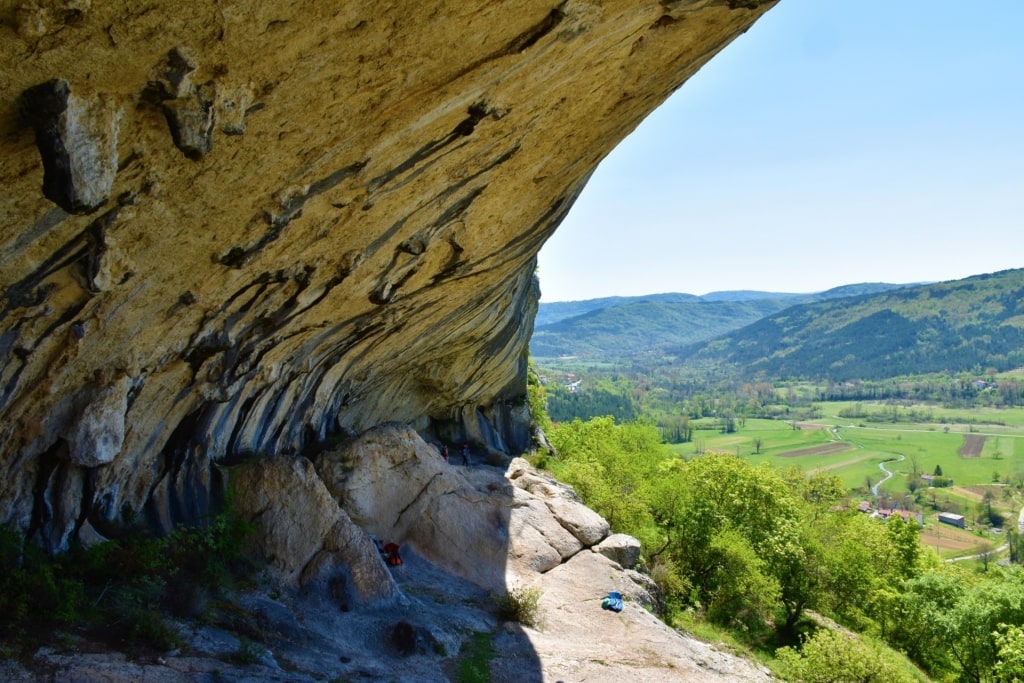
Karst edge
The Karst edge is near Koper as well, a magnet to rock climbers from around the world. These precipitous limestone cliffs, inhabited by all kinds of critters, including the short-toed snake eagle, should make your list if you love climbing and hiking, too.
Truffle hunting is a popular nature-oriented activity in the Istrian forest, as is diving off Koper’s coast, where you can explore the underwater world beneath the Adriatic’s waves.
Things to Do & Attractions in Koper
Wander Around Koper’s Tito Square
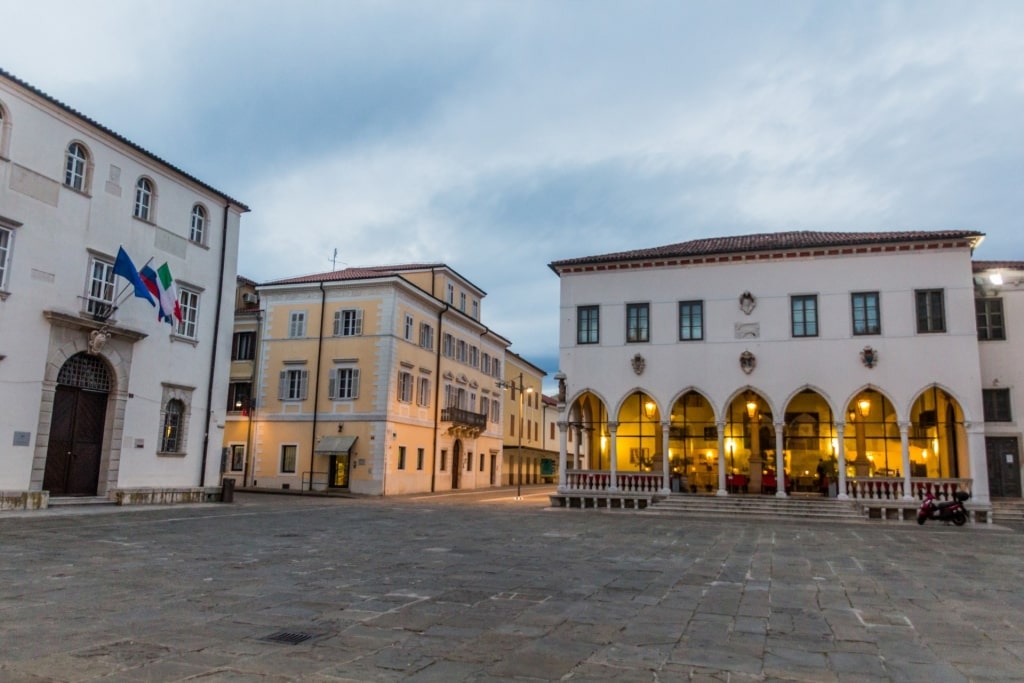
Tito Square
In some respects, Koper is a repository of the different architectural motifs that have defined the various civilizations that have conquered or ruled here.
Tito Square is a wonderful place to meet up with friends, begin your city walk, and take in the confluences of Koper’s numerous architectural styles.
The Venetian-style Titov Trg, as the square is known in Slovene, still retains the title of its namesake, Josip Broz Tito, leader of the former Yugoslavia.
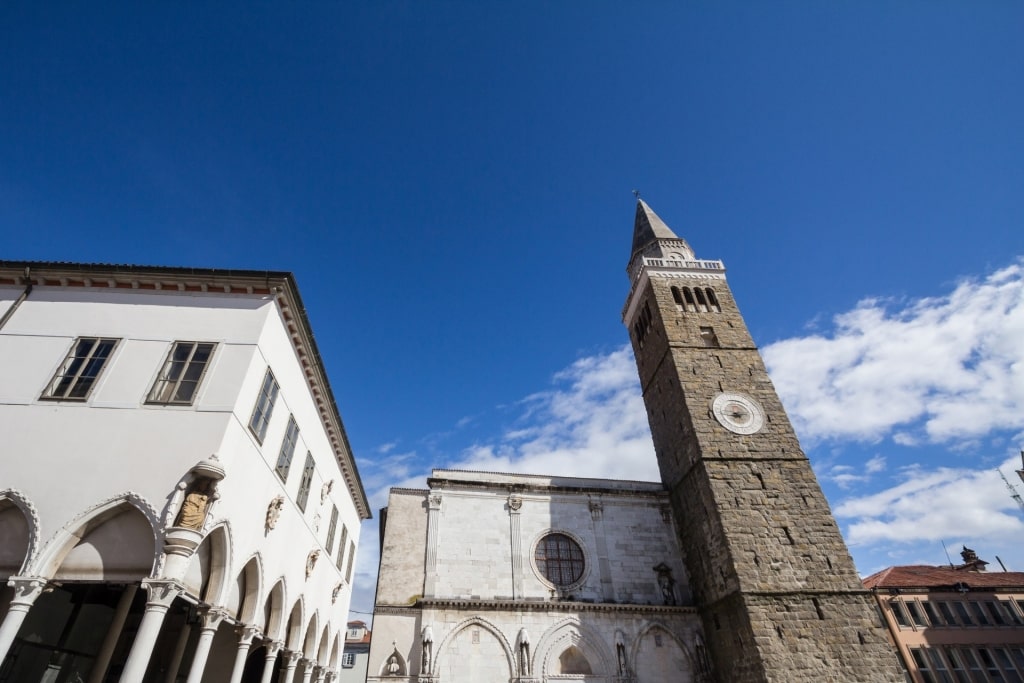
Tito Square
Koper’s lively main square is also home to the Praetorian Palace, Koper’s Cathedral, and the nearby 177-foot high City Bell Tower, which currently houses Slovenia’s oldest functioning bell, the bell of St. Nazarius. The tower’s viewing platform over the square, which you can reach after climbing 204 steps, offers magnificent views over the rooftops.
Visit the Venetian Praetorian Palace
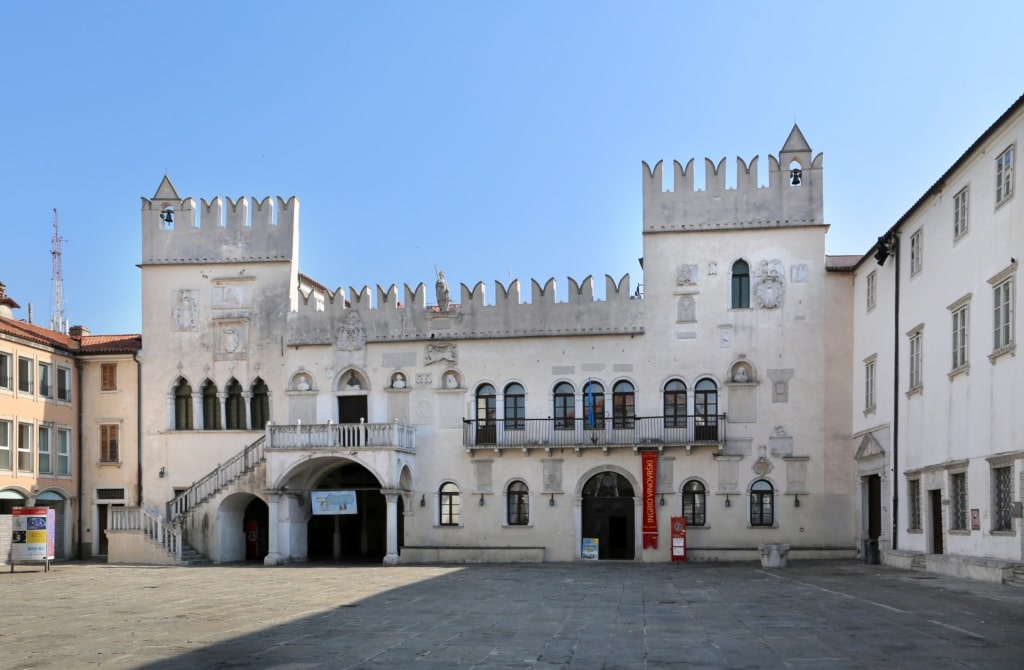
Praetorian Palace Photo by Sailko on Wikimedia Commons, licensed under CC BY 3.0
The 15th-century Praetorian Palace, off Tito Square, is a prime example of Late Venetian Gothic and Renaissance building styles.
The majestic two-story building, complete with an external staircase, an ornate second-floor balustrade, and two towers on either side, now houses a pharmacy, a tourist information center, a wedding hall, a university, and also serves as Koper’s town hall.
You can arrange a guided tour of the interior of this culturally significant palace for yourself—or simply appreciate its beauty from the outside.
Admire the Cathedral of the Assumption of the Blessed Virgin
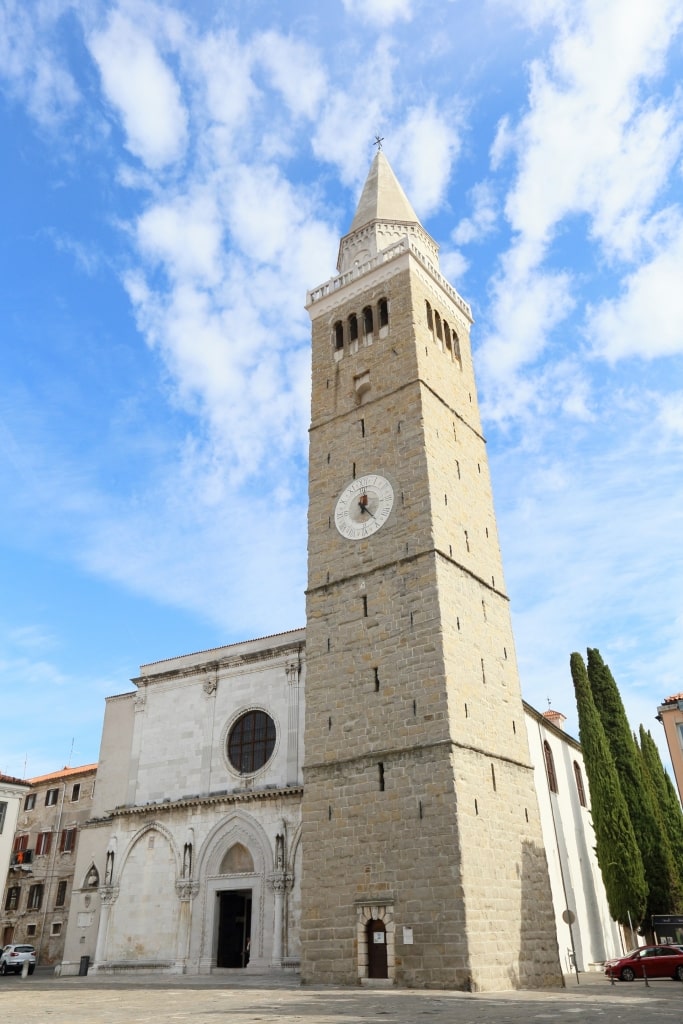
Cathedral of the Assumption of the Blessed Virgin
The Cathedral of the Assumption of the Blessed Virgin, or Koper Cathedral, dates back to the 11th century, although other churches stood on this spot before that time.
Due to various renovations over the centuries, the large cathedral, which also goes by the name of the Cathedral of St. Nazarius, now boasts a mix of Gothic and Renaissance construction techniques and façades.
Mass, which you can attend, is held at the cathedral at different times throughout the day, seven days a week.
Inside the notable building, you’ll find paintings by the Venetian artist Vittore Carpaccio, as well as a 16-ton symphonic organ with more than 5,500 pipes, which is one of the biggest organs in Slovenia.
Drop by Koper’s Carpaccio House and Square
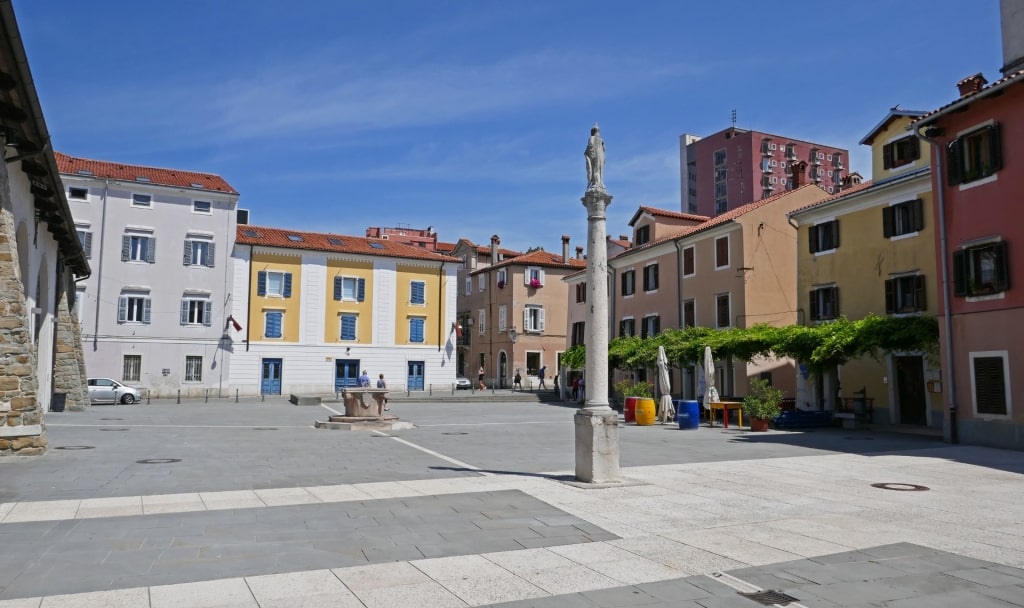
Carpaccio House and Square
For a small window into Koper’s long history, drop by Koper’s Carpaccio House and Square, next to the old port.
The Column of St. Justinen, and the central well imported from Venice in the 1930s, are Carpaccio Square’s most prominent features. The column commemorates The Battle of Lepanto, when the Holy League defeated the Ottoman Empire in a naval battle in 1571.
The reddish Venetian-Gothic Carpaccio House, located on the square, is rumored to have been the birthplace of the painter Vittore Carpaccio, but more likely served as a residence for his son, Benedetto Carpaccio, during the 16th century.
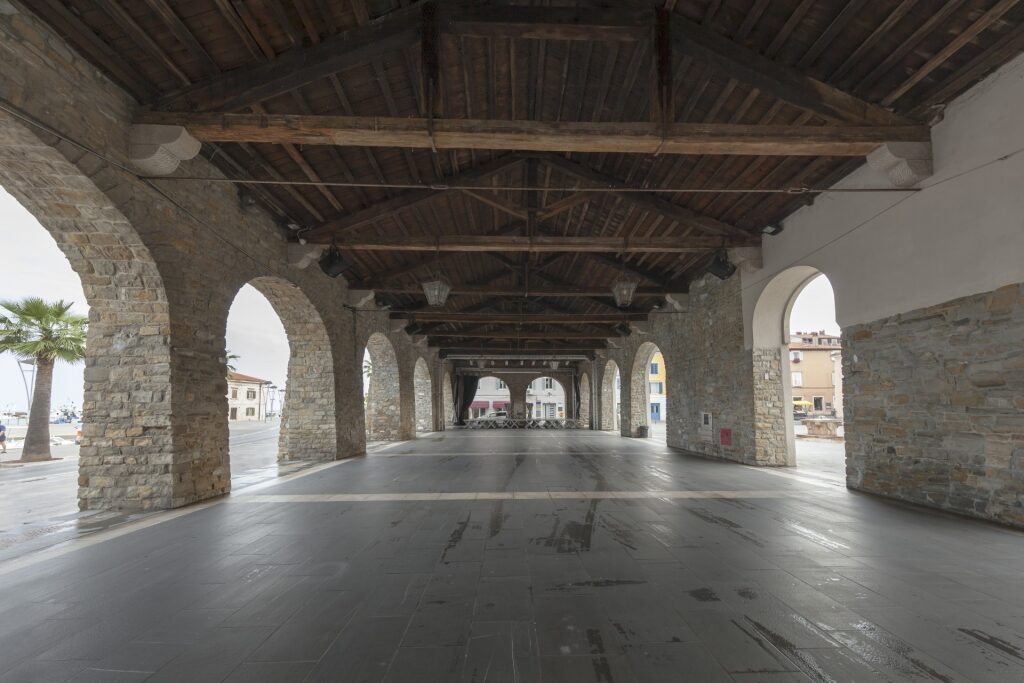
Taverna Koper
Taverna Koper, or St. Mark’s Storage, on the western side of the square, near the marina, was once a Venetian salt depot. These days, the Taverna’s stone archways serve as a venue for live events.
Head Underground at Postojna Cave Park
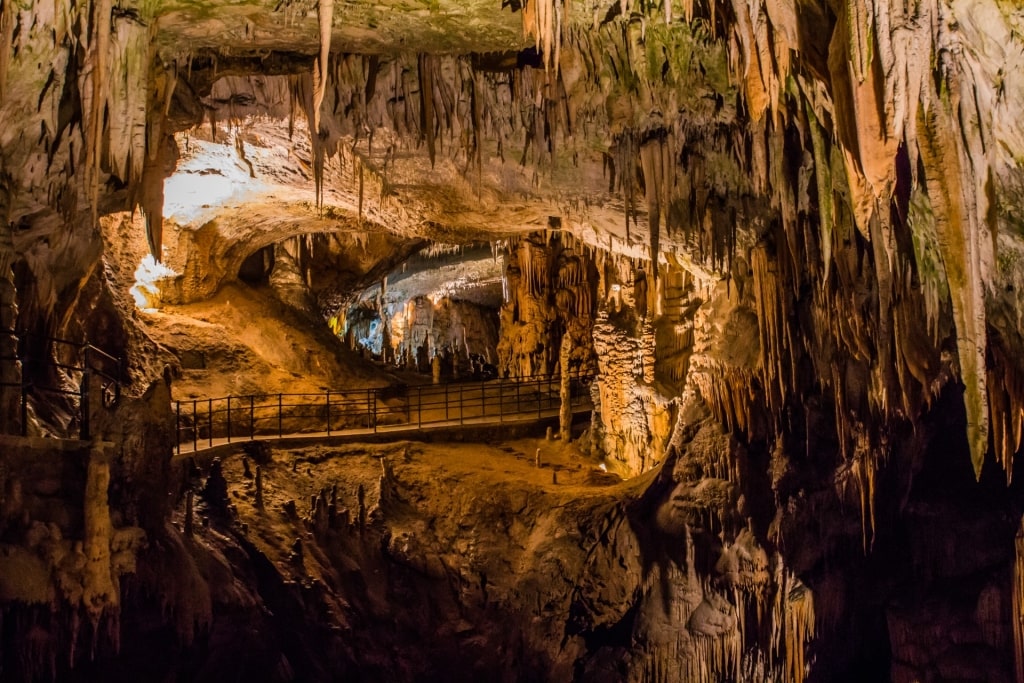
Postojna Cave Park
Less than an hour’s drive northeast of Koper, you’ll encounter Postojna Cave Park, an underground wonderland.
With almost 17 miles of spacious Karst caves, the towering “Brilliant” stalagmite, plus an underground double-track tourist train stretching more than two miles, the Postojna Caves will treat you to a treasure trove of fascinating stalactites, stalagmites and oddly-shaped stone pillars to gaze upon.
Make sure you check out the cavern’s “baby dragon” residents as well, called “olms”. These are pinkish aquatic salamanders that can go without food for several years and live as long as a century.
Explore Misty Lake Bled
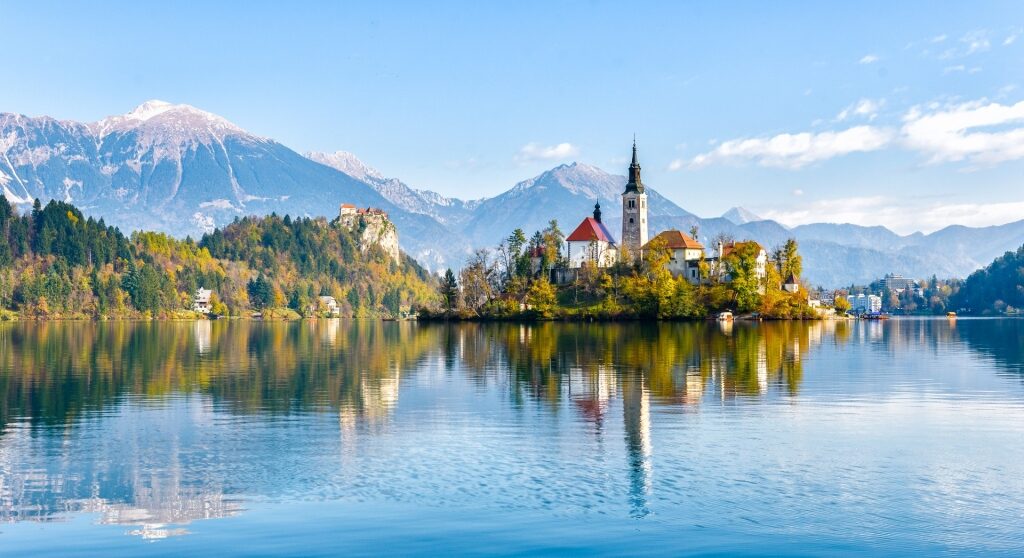
Lake Bled
In the lush Julian Alps, you’ll find the magical town of Bled, and the misty (especially in the morning) Lake Bled—one of the best lakes in Europe—which will offer you a very different type of natural setting compared to the Adriatic scene permeating Koper.
Highlights in Bled include the exceedingly picturesque Bled Island, which you can visit by a flat-bottom gondola-like Pletna boat, the small island’s St. Mary’s Church, plus Bled Castle (the oldest castle in Slovenia), built atop a towering cliff overlooking the town.
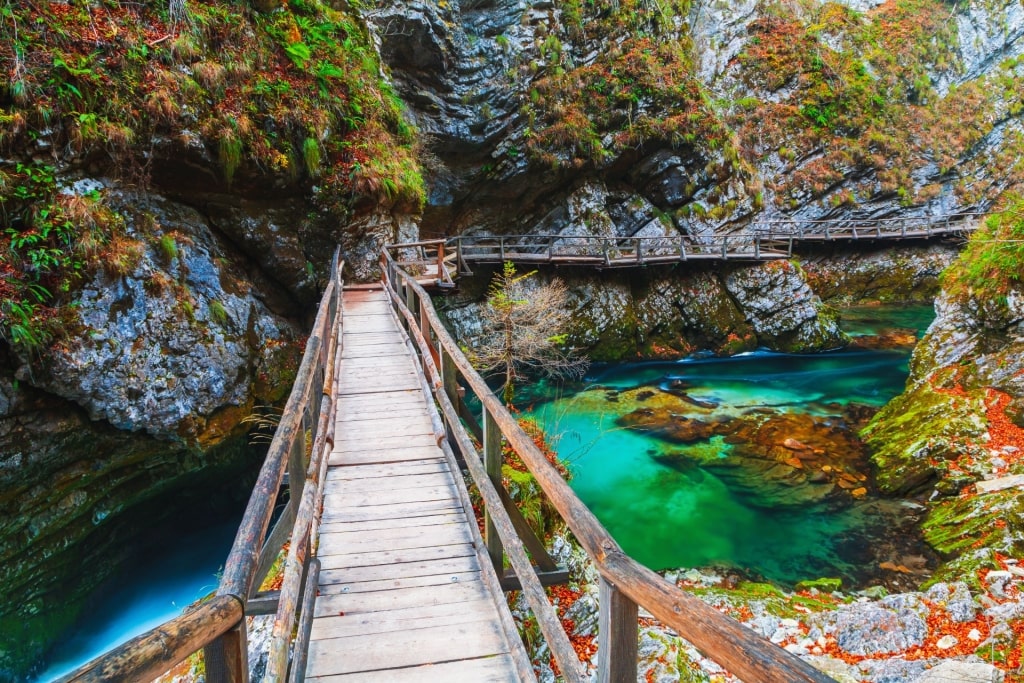
Vintgar Gorge, Triglav National Park
Triglav National Park’s Vintgar Gorge walk, next to the crystal clear Radovna River, comes in at about a mile in length. This short trek, along a suspended walkway above the rushing river, is an exhilarating experience near Bled that you don’t want to miss either.
Visit Scenic Piran
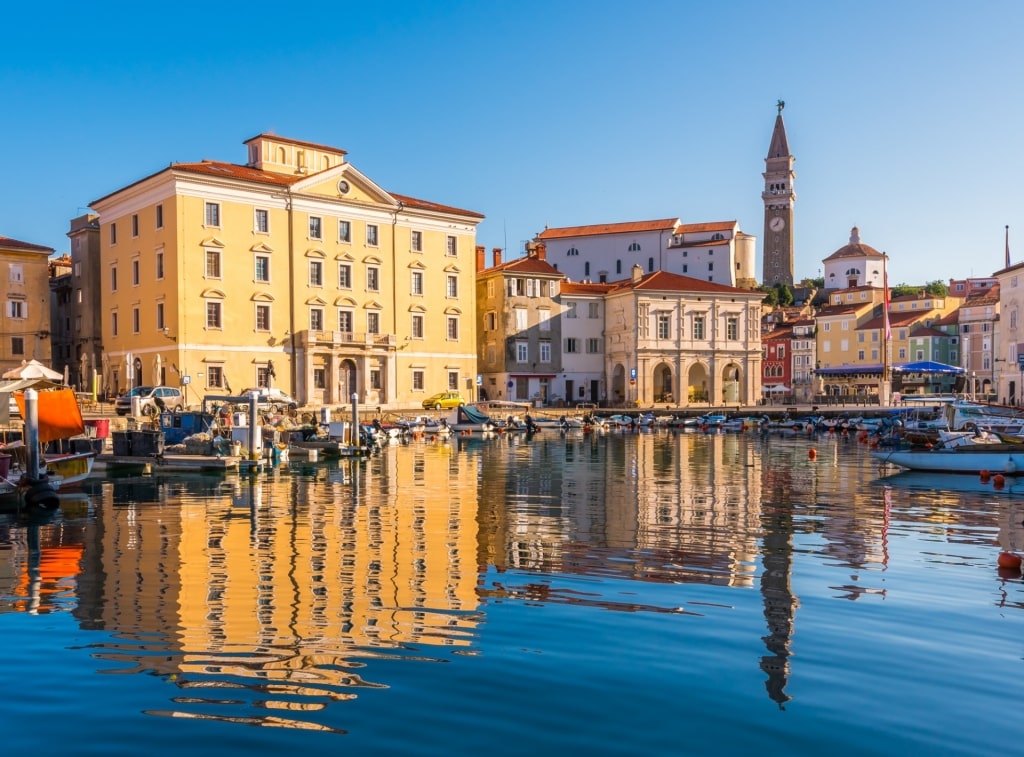
Piran
Piran is yet another postcard-perfect Adriatic town, slightly west of Koper, which you should visit if time allows. Piran, with its Venetian and Italian architectural influences, was built on a thin slice of peninsula jutting out into the sea.
Parts of the old city fortification, The Walls of Piran, still loom over the town. Simply wandering around the labyrinth of pretty little streets, or heading up to the hilltop of St. George’s Church, is a pure delight.
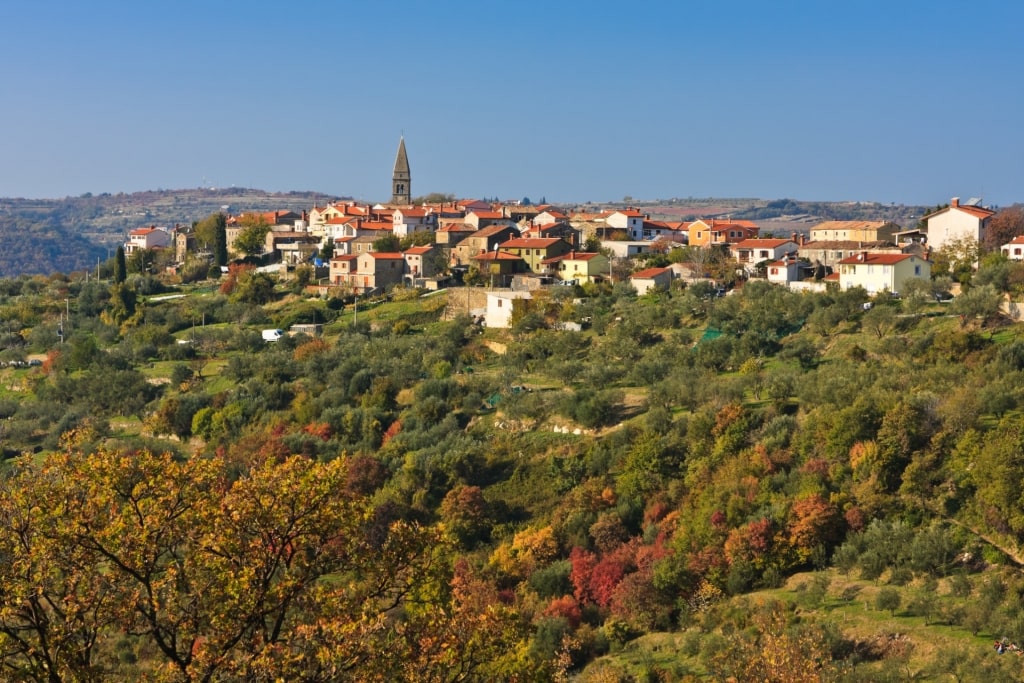
Padna
Close to Piran, you’ll also find the appealing Istrian town of Padna, famed for its scenic views of Piran Bay, and the hillside olive groves surrounding the village.
If you’re in the market for some premium local olive oil, Padna should definitely be added to your list of destinations to visit along the Slovene Riviera.
Head to Ljubljana
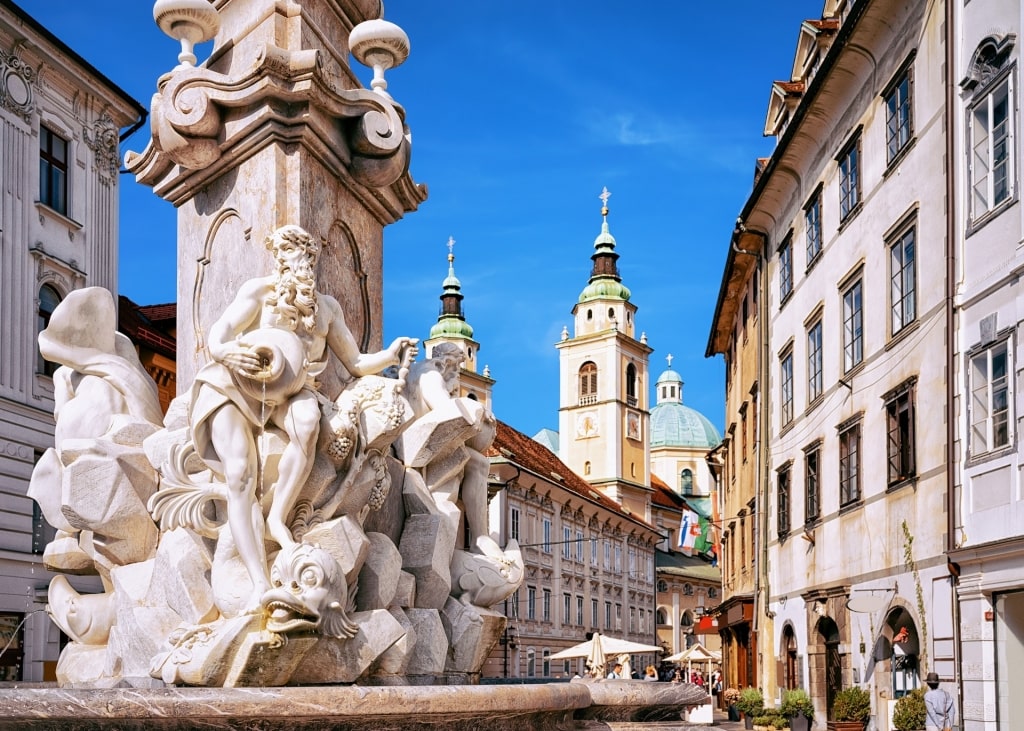
Ljubljana
Ljubljana, a little over an hour inland by car from Koper, is Slovenia’s small (by European standards) capital, rich with Baroque architecture, like the celebrated Robba Fountain.
The capital expands across both sides of the Ljubljanica River, and despite its relatively small size, packs in a lot to do and see.
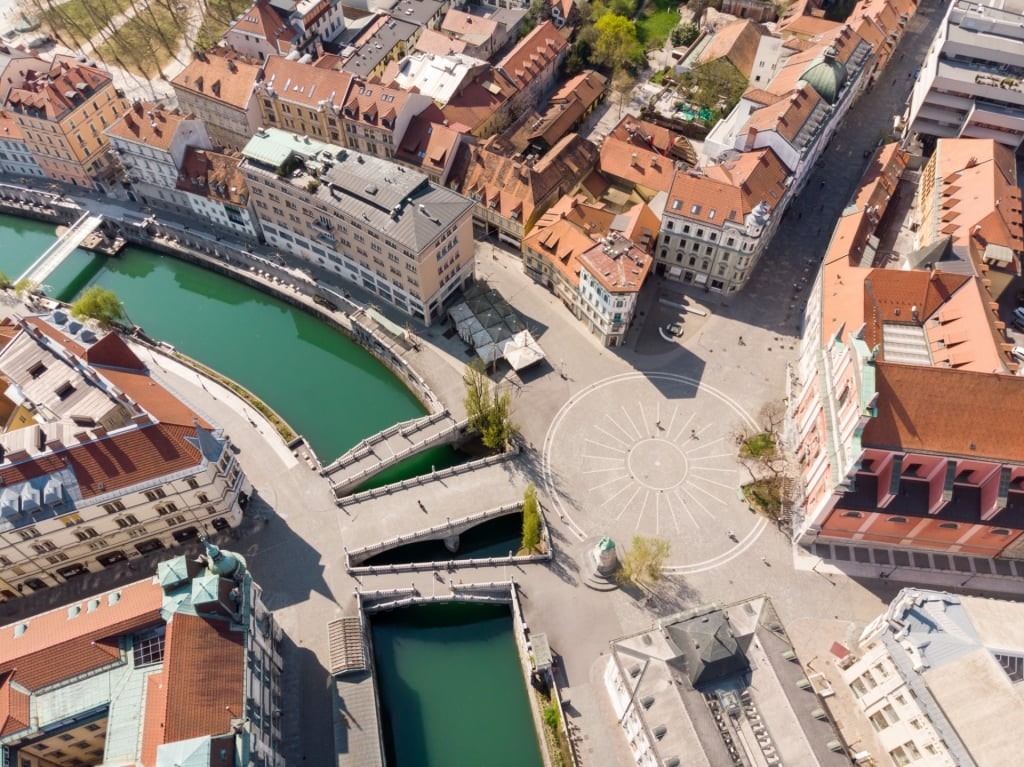
Triple Bridge, Ljubljana
A few top Ljubljana picks include the handsome limestone and concrete Triple Bridge (three pedestrian bridges bundled together) over the Ljubljanica, connecting the historic old town with modern Ljubljana.
The footpaths, along with the funicular up to the hilltop Ljubljana Castle, will offer you a chance to tour one of the best medieval castles in Europe, along with plenty of awe-inspiring views of green Ljubljana below.

Prešeren Square, Ljubljana
Another poetic place to visit in Ljubljana is Prešernov trg, or Prešeren Square, which is a pedestrian-only central meeting point in the medieval old town. The square wows with its impressive layout, not to mention its bronze statue of beloved national poet France Prešeren.
Food & Drink
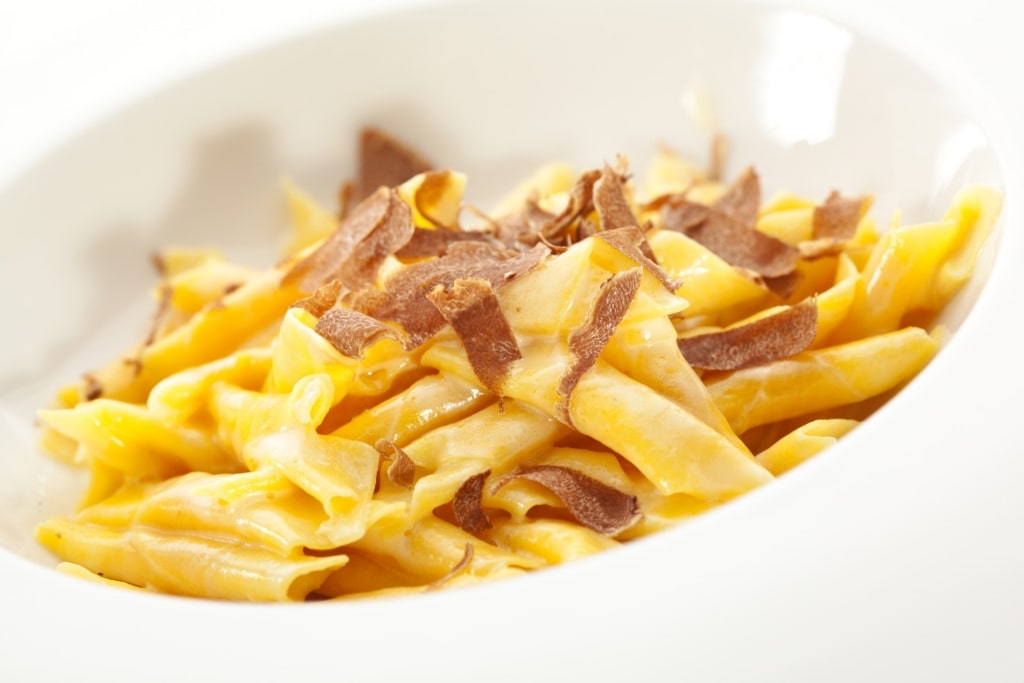
Fuzi pasta
As far as food and drink are concerned, Koper is a great place to fill your belly with fresh seafood, imbue outstanding wines like red Refosco and white Malvasia, and dig into heartier Slovenian dishes prepared with locally-produced olive oil, like the frtalja omelet, an enticing mix of whipped eggs, truffles, asparagus, sausages, and prosciutto.
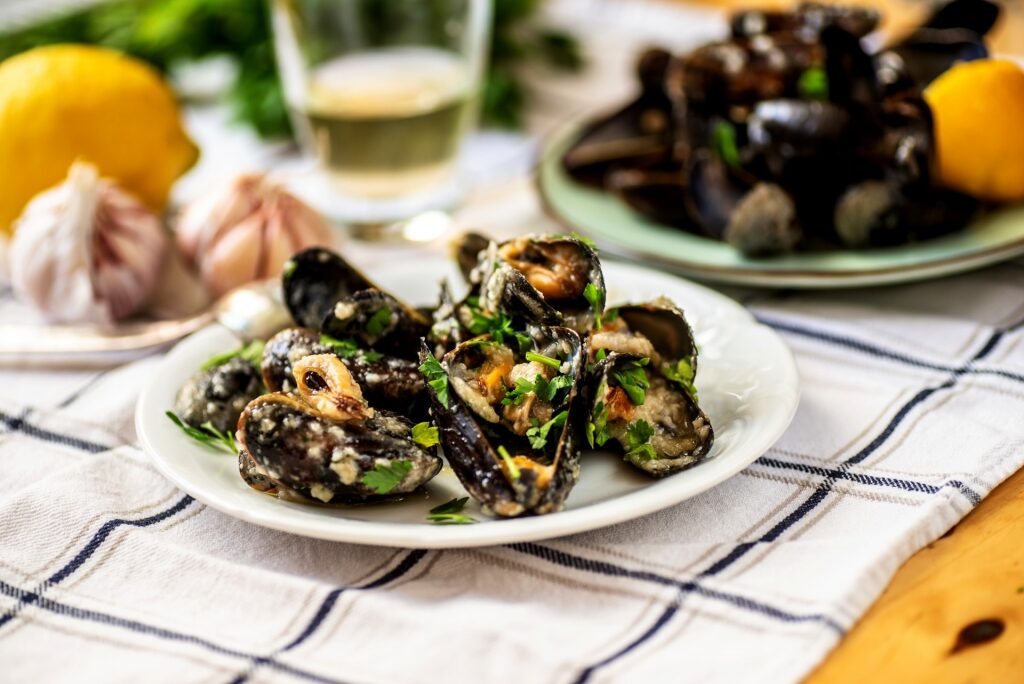
Buzara-style mussels
While wandering around Koper, you can try some carb-infused Istrian fuži pasta, made with truffle cream sauce. Buzara-style mussels cooked in breadcrumbs, garlic and wine, are big in this Eastern European city too, as are grilled calamari and fish stews.
Istrska Klet Slavček is a reasonably-priced spot in town for a quick meal if you’re on the go, including fried squid and fish goulash.
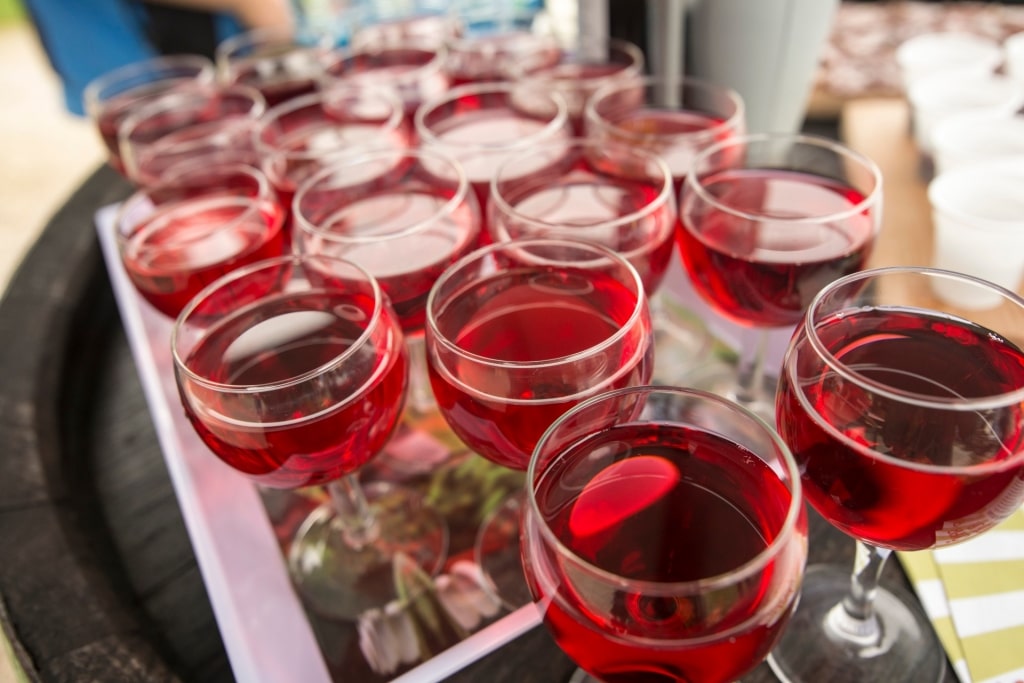
Slovenian wine
The Okusi Istre wine bar is an enjoyable Koper pitstop, where you can sample a selection of lovely local wines and olive oil. Capra, at the Grand Koper Hotel, focuses more on upscale seafood and seasonal vegetables.
Gostilna Za Gradom Rodica is a dining spot famed for its creative, contemporary takes on local seafood, served at the restaurant’s hillside dining room-veranda, with the menu changing daily.
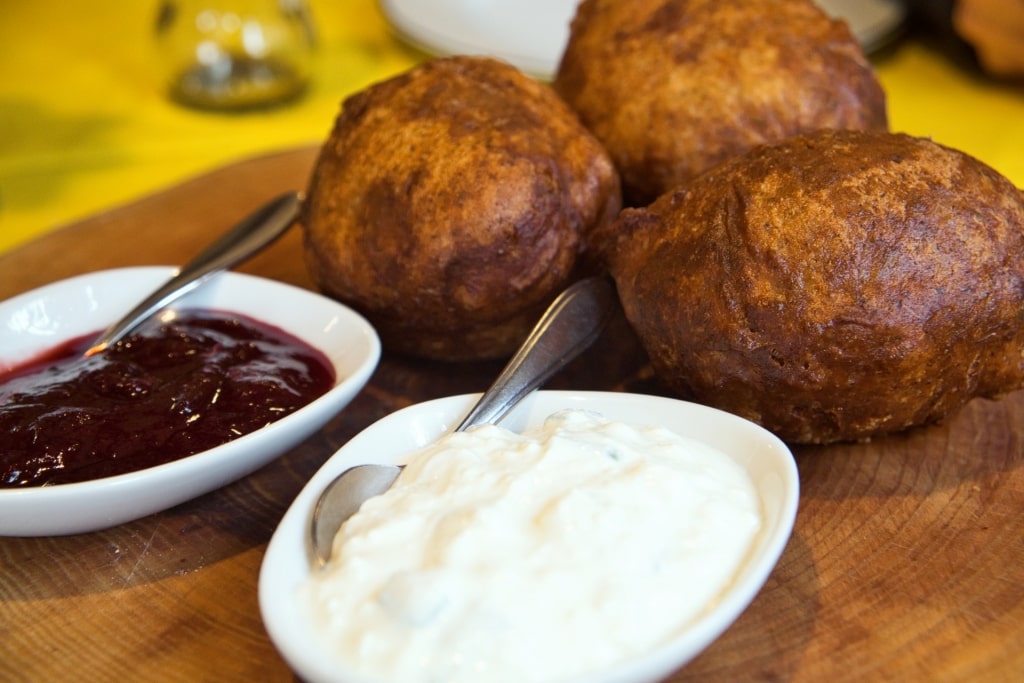
Fritule
In late September, Sweet Istria, or Sladka Istra, takes place. This is a time when you can feast on desserts to your heart’s content. Fritule, a typical Istrian fried doughnut, also called miške, or “mice”, due to their small shape, is a treat that you ought to try too.
Best Time to Visit Koper
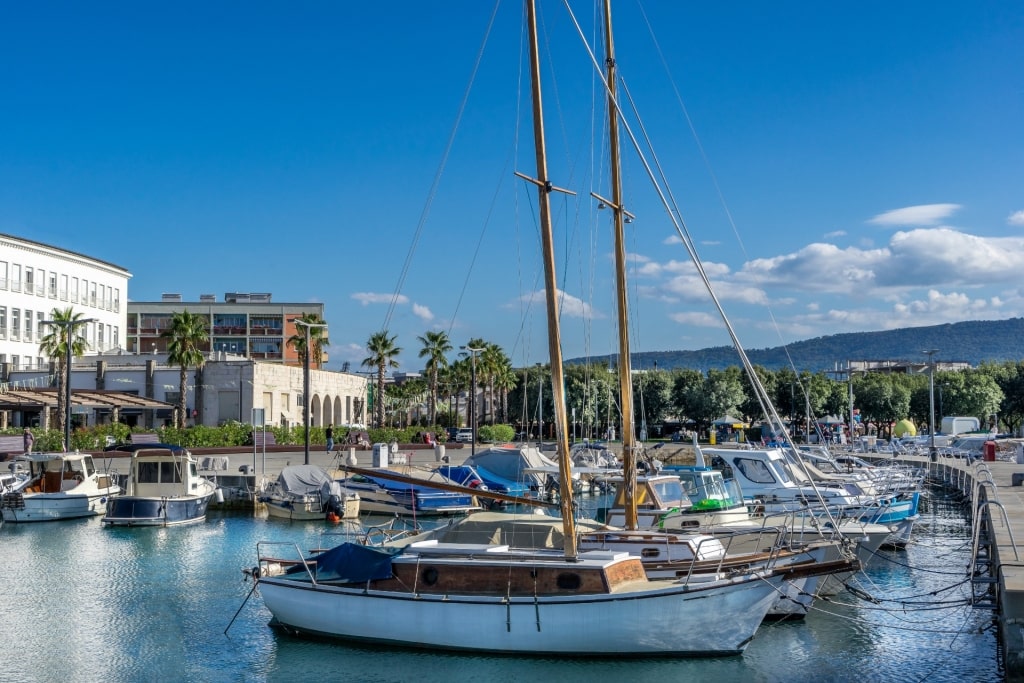
Koper
Thanks to Koper’s Mediterranean climate, you can visit any time of the year. If you want to avoid the rainy season and spend more time swimming or hiking, April through September—and often into October—are the best times to call at this Istrian port, for long, sunny days and balmy evenings.
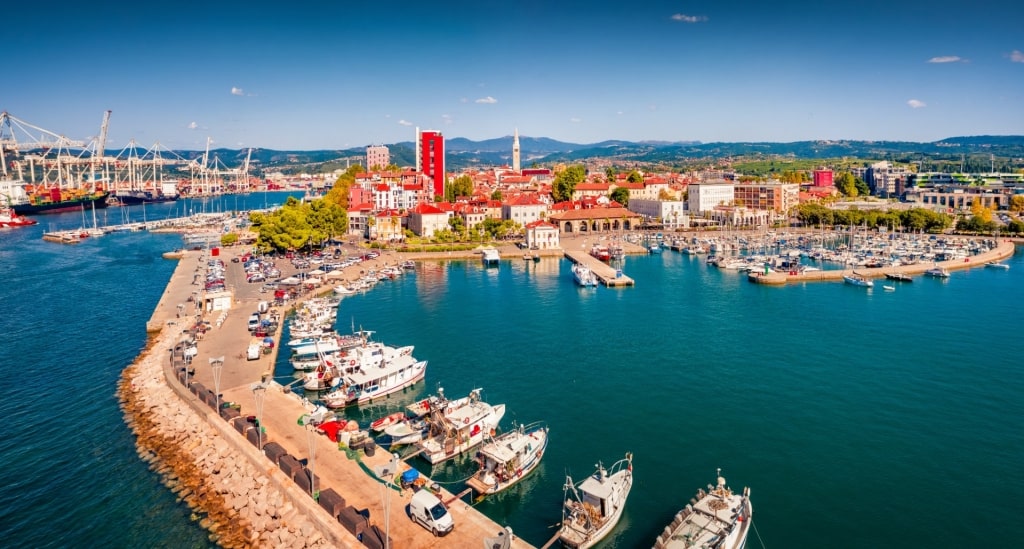
Koper
Enjoy Slovenia’s many architectural and natural wonders for yourself on a cruise to Koper. Browse cruise itineraries on our website and book your European adventure today.
